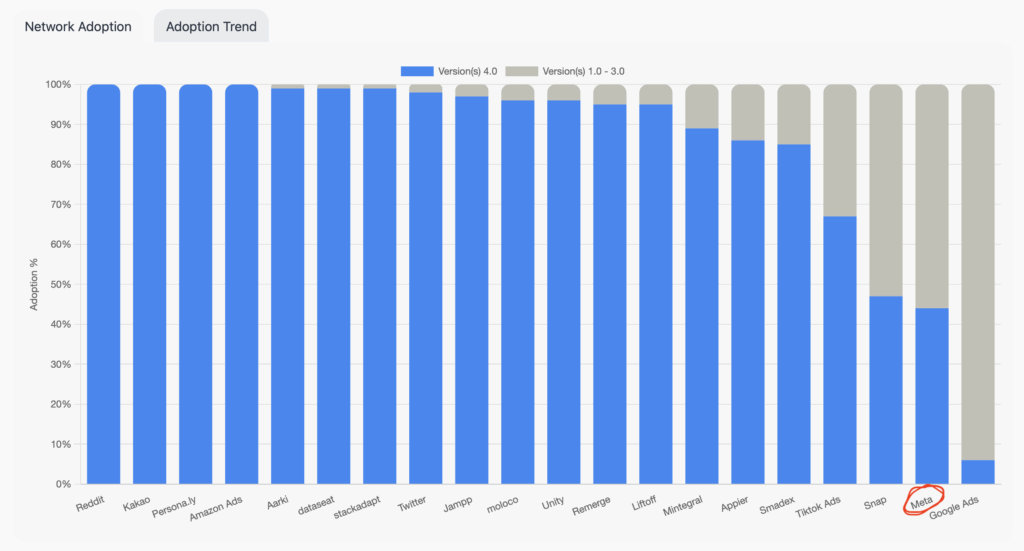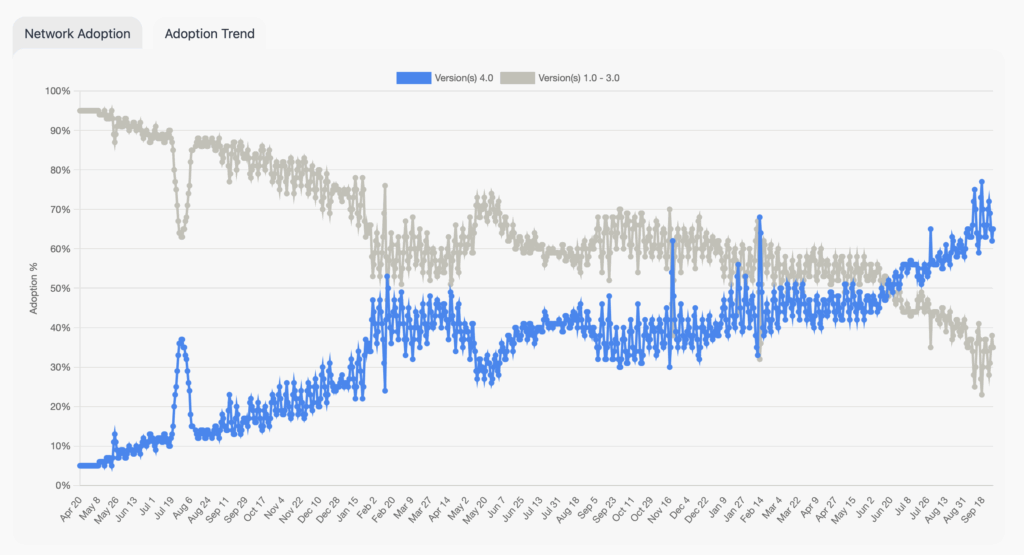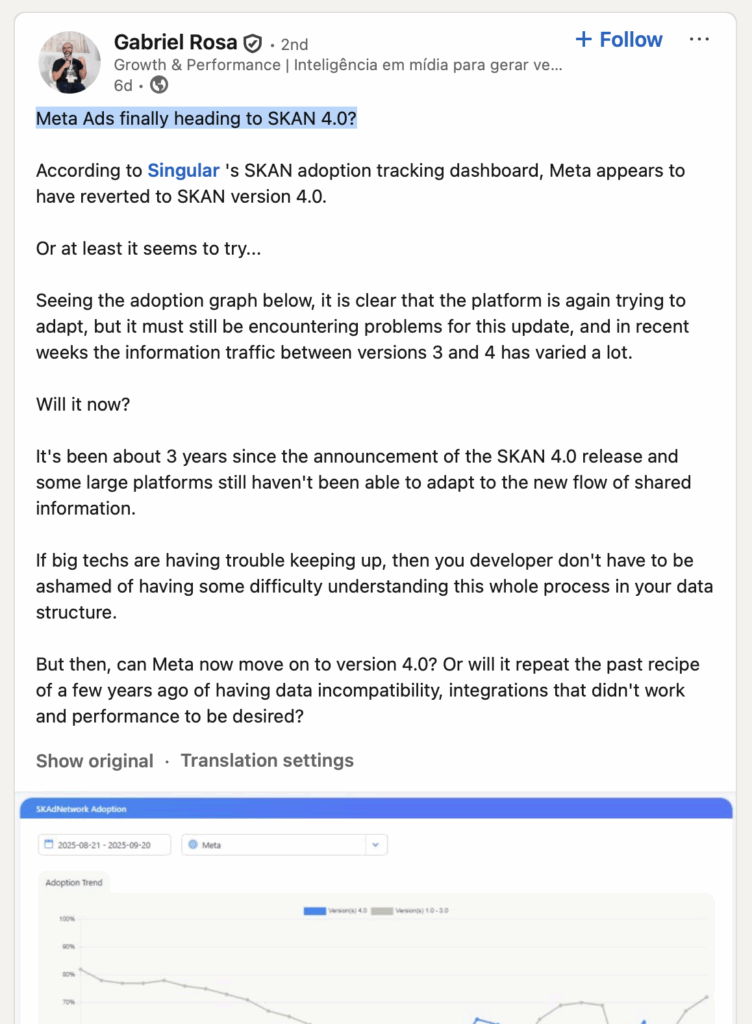What are the best console games so far in 2025? And, what does that list reveal about how the industry is changing?
Of course, asking what the best console games are is a bit of a different question than which are the top selling console games. Anyone can grab a list of the top-selling games for 2025, and it’ll probably look a lot like this:
- Monster Hunter Wilds
- Assassin’s Creed Shadows
- The Elder Scrolls IV: Oblivion Remastered
- Call of Duty: Black Ops 6
- MLB The Show 25
And you’ll probably see some Elden Ring, some Doom, maybe Forza Horizon 5, and a mix of Minecraft, NBA 2K25, Grand Theft Auto, and EA Sports FC 25 in the mix, as they’ve led sales at various months over the past year.
But what are the best console games so far in 2025?
Answering that question means we need to look beyond sales numbers and look at what makes these games awesome … according to critics, sure, but especially players. And it reveals massive trends in the console gaming industry:
- Indie games have never been stronger
- Quality over quantity is winning
- Cross-platform play is table stakes
- Innovation within genre matters more than reinventing the wheel
- Pricing strategy matters … but quality matters more
- Social and creative elements trump graphics
- The death of the 60-day review cycle
- Players crave completion, not endless engagement
Here are 12 that made it for me.
(Oh, and game developers: while you’re checking that out, take a look at Singular’s PC and console attribution and analytics product, as well as our cross-device attribution product. We can help you grow faster … more at the bottom of this post.)
Curious how these compare to PC gaming? Check out the top PC games right now from 5 different perspectives
Best console games: games that conquered 2025
Monster Hunter Wilds
This game sold well, but also had great gamer appeal.
- Sales: 10.5+ million units
- Critical reception: 89 on OpenCritic (196 reviews)
- Verdict: This is a commercial juggernaut with broad appeal.
Monster Hunter Wilds didn’t so much launch as detonate. Capcom’s latest entry became the fastest-selling game in the publisher’s history, selling 8 million copies in just 3 days.
By the end of its first month, it had sold over 10 million copies, a company record. Monster Hunter Wilds dominated U.S. sales charts for months.
What makes Wilds remarkable isn’t just its commercial success but how it achieved it.
The game introduced seamless crossplay for the first time in the franchise, breaking down barriers between PlayStation, Xbox, and PC.
That’s huge.
The elephant in the room?
Performance issues on PC at launch led to mixed Steam reviews, showing that even massive commercial success can’t escape technical scrutiny. However, Capcom’s commitment to post-launch updates, including the addition of classic monsters and quality-of-life improvements, has gradually won back player goodwill.
Clair Obscur: Expedition 33
If Monster Hunter Wilds was kind of the expected blockbuster, Clair Obscur: Expedition 33 was 2025’s lightning bolt from a clear sky.
- Sales: 5+ million units
- Critical reception: 92 on OpenCritic (177 reviews, 97% recommended)
- Verdict: The year’s biggest surprise and critical darling
This became Metacritic’s highest-rated new game of the first half of 2025, scoring 93 on the platform while earning near-universal praise from critics.
And it sold pretty well too:
- 500,000 units sold in 24 hours
- 1 million within three days
- 3.3 million after 33 days
- Over 5 million copies as of October
For a $50 indie title from a new studio, these figures are … impressive.
What’s the secret?
Clair Obscur blends turn-based RPG mechanics with real-time action elements all in a cool Belle Époque-inspired dark fantasy world. The game has voice acting from Charlie Cox and Andy Serkis, production values that you’d think came from AAA studios, and a super-cool story.
The really good news: innovation and craft can still overcome massive marketing budgets.
Hades II
When Hades II finally left Early Access just a month ago, it immediately claimed the crown as the highest-rated new game of the year.
- Sales: Early access numbers strong … sales are unclear so far
- Critical reception: 94 on both Metacritic and OpenCritic
- Verdict: Roguelike perfection refined to its peak
Supergiant Games’ sequel doesn’t just meet the impossibly high bar set by its predecessor … it may even surpass it.
The game keeps everything that made the original Hades addictive while adding more. Critics praised its “impeccable combat,” “flawless characterization,” and the way it evolves the formula without abandoning what made it special.
As GameSpot noted in their review, it’s “Hades 2 improves upon its predecessor in every way, making it a masterfully crafted sequel that is essential to play.”
Hollow Knight: Silksong
Few games have been as anticipated as Hollow Knight: Silksong.
- Sales: 6+ million units
- Critical reception: 92 on OpenCritic
- Verdict: The indie phenomenon that broke the internet
After 6 years of waiting, Team Cherry shadow-dropped the game on September 4 with just 2 weeks’ notice. Online storefronts crashed, the game hit 587,000 concurrent players on Steam, and it became the biggest game on Twitch within minutes.
Whoa.
3 million copies sold on Steam alone in the first few days, with total sales across all platforms reaching 6.4 million within a month. On Xbox, Game Pass downloads tripled PlayStation’s numbers, while Steam accounted for roughly 4 million of those downloads.
Also, Silksong earned widespread acclaim for improving upon the original Hollow Knight in nearly every way: faster movement, more complex combat, brilliant level design, and the trademark Team Cherry attention to atmospheric detail.
The fact that this entire phenomenon was created by essentially two people makes it one of gaming’s most remarkable success stories of 2025.
Split Fiction
Developer Hazelight has become synonymous with innovative co-op experiences, and Split Fiction continues that legacy.
- Sales: Undisclosed
- Critical reception: 91 on Metacritic
- Verdict: Excellence from proven masters
Following the critically acclaimed It Takes Two, this game tells the story of 2 writers — one specializing in sci-fi, the other in fantasy — who become trapped inside their own stories by a machine seeking to steal their ideas.
(Sounds like modern AI to me.)
What makes Split Fiction special is its creativity and the variety of its gameplay. Playing in split-screen, you and a partner can traverse wildly different environments, each requiring unique approaches and cooperation.
GameSpot awarded it a rare 10/10, calling it “hilarious, compassionate, and delightful” and praising its multiplayer experiences.
Best console games: major releases that delivered
Death Stranding 2: On the Beach
More action, more combat, still in a great setting.
- Sales: 1.4 million (estimate)
- Critical reception: Strong (PS5 exclusive)
- Verdict: Kojima’s vision fully realized
Hideo Kojima’s sequel to his divisive 2019 masterpiece is a sequel worthy of the masterpiece mantle. The game features more action and combat while addressing nearly every criticism leveled at the original.
Set primarily in Australia, it maintains the bizarre post-apocalyptic world while expanding it with improved gameplay systems.
Kingdom Come: Deliverance II
A medieval masterpiece with depth and complexity.
- Sales: 2+ million on Steam, 600k+ on consoles
- Critical reception: Strong across platforms
- Verdict: Medieval immersion at its finest
The sequel to the 2018 medieval action-RPG doubles the size of the original’s open world and continues the story in 15th century Bohemia. Critics praised it as “a medieval masterpiece” with “staggering scope, depth and complexity.”
The game allows players to be diplomats, craftsmen, knights, or cutthroats … or any combination thereof.
Assassin’s Creed Shadows
Yeah … it’s Assassin’s Creed …
- Sales: Top 3 in U.S. year-to-date charts
- Critical reception: 81 on OpenCritic (206 reviews)
- Verdict: Solid entry
While maybe not quite reaching the critical heights of some competitors, Shadows sold well, spending much of the year in the U.S. top 5. The most-reviewed game of 2025 with 206 professional critiques, it shows Ubisoft’s continued dominance in the open-world action space, even if some critics said it follows familiar formulas.
Donkey Kong Bananza
Donkey Kong will always be awesome, right?
- Sales: Uncertain
- Critical reception: Strong Nintendo showing
- Verdict: Switch 2’s platforming showcase
The Switch 2 launch lineup benefited enormously from Donkey Kong Bananza, which captured the same Nintendo magic and creativity and pure fun that we’ve seen for decades. Digital sales weren’t fully reported, but the game ranked highly on Nintendo platforms and reminded everyone why the company remains the king of platformers.
And yes … some wildcard successes
Currently sitting at #2 in the U.S. year-to-date sales charts, this sports title shows the enduring appeal of the college football license and of course EA’s sports dominance.
Ghost of Yotei
Launching in October, Sucker Punch’s sequel has received strong critical reception (87 on OpenCritic, 99 reviews), with critics praising its “gorgeous landscapes and satisfying, fluid action” while noting it doesn’t revolutionize the formula.
NBA 2K26
The basketball simulation continues to dominate its genre, ranking #5 in U.S. year-to-date sales. As GameSpot noted, NBA 2K earns another year as the best annual sports game available.
What does this tell us about console games right now?
1. Indie games are stronger
The success of Clair Obscur: Expedition 33, Hollow Knight: Silksong, and Hades II is impressive. These aren’t just “good for indie games” … they’re competing with AAA blockbusters for critical acclaim, player attention, and sales.
Clair Obscur’s 5 million sales would be considered a success for plenty of mid-tier publishers. And Silksong’s 6 million copies in a month rival major AAA releases.
As gaming analyst Rhys Elliott noted in his breakdown of Silksong’s success: “There’s a lot of shared DNA between souls-likes and the two Hollow Knight games … [the] ‘lower ceiling’ argument was already hilariously outdated, but Silksong has buried it completely.”
2. Quality over quantity
The concentration of success at the top of the market tells a compelling story.
In some subgenres, the top two games account for 80% of the category’s revenue. Players are becoming more discerning. They’re spending time with fewer games but engaging more deeply with the ones they choose.
Monster Hunter Wilds’ 10+ million sales and Clair Obscur’s 5 million show players are voting with their wallets for polished, complete experiences.
And they don’t want rushed live-service games or half-baked releases.
Monster Hunter Wilds’ introduction of crossplay wasn’t just a feature, it was essential to its success.
In 2025 and 2026, players expect to be able to play with friends regardless what hardware each of them has bought. Games that deliver this see expanded communities, longer lifespans, and better word-of-mouth growth.
4. Innovation within genres matters
Almost every successful game on this list improves upon established formulas rather than creating entirely new ones.
Hades II is a better Hades.
Silksong is a refined Hollow Knight.
Clair Obscur blends turn-based combat with real-time elements.
In other words: familiar genres combined in fresh ways.
This suggests that players appreciate evolution over revolution. They want studios to understand what makes a genre work, then enhance it thoughtfully rather than discarding everything in pursuit of novelty.
5. Pricing strategy matters, but quality matters more
Hollow Knight: Silksong’s $20 price point and Clair Obscur’s $50 tag certainly helped their success in an era of $60-80 games for consoles.
But if these games weren’t excellent, they wouldn’t have sustained their sales trajectories. Players are willing to pay premium prices for quality, like Monster Hunter Wilds at $70, but nobody wants to pay AAA prices for CCC experiences.
6. Social and creative elements matter more than graphics
One of the most telling trends from 2025 gaming research is that players value social features, creativity, and gameplay over cutting-edge graphics.
(I mean, we learned this from Nintendo Wii way back in the day, no?)
This explains why platform-style games like Fortnite, Minecraft, and Roblox continue to dominate while gorgeous but ultimately hollow AAA titles struggle.
The success of stylized games like Clair Obscur and Hollow Knight: Silksong over graphics-first titles supports this. Beauty matters, power is great, and the latest consoles are impressive … but artistic vision trumps polygon counts.
7. The death of the 60-day review cycle
Team Cherry’s decision to not send out review copies for Silksong and still achieve massive success represents a major shift. Streamers and online word-of-mouth can generate more buzz than traditional review outlets.
The old gatekeepers matter less.
This doesn’t diminish critical analysis … it just means power is more distributed.
8. Players crave completion, not endless engagement
The success of focused, complete experiences like Split Fiction, Blue Prince, and Clair Obscur’s 30-hour campaign suggests fatigue with games-as-service models.
Players want games that respect their time, tell complete stories, and offer satisfying conclusions … maybe more than endless grinds designed to extract maximum playtime (and perhaps endless revenue).
Looking ahead … more is coming
As we move into the final months of 2025, a few major releases still loom: Metroid Prime 4: Beyond, Ghost of Yotei’s continued performance, and maybe some holiday surprises.
But 2025 is already going to be remembered as a year when indie and mid-sized studios proved they could compete. And win.
- Massive scale and technical ambition are still cool (Monster Hunter Wilds)
- A clear vision can achieve critical and commercial success (Clair Obscur)
- Patience, craft, and respecting your audience can create legendary results (Hollow Knight: Silksong)
- And iteration on a theme can be its own form of innovation (Hades II).
So, in a way, these games are blueprints for console gaming’s future. A future where it’s not always about the biggest budget and the biggest team making the biggest game.
At least, not always.
Growing your top console game? Singular can help
Building a great game is great.
But unless it’s marketed well, who will know?
Singular offers all the tools you need to measure and attribute your console game growth, helping you optimize your marketing strategy.
Console game makers need clear cross-platform insights. With Singular’s PC & Console Attribution product, studios can unify measurement across PC, console, CTV, web, and mobile, tracking user acquisition, engagement, and LTV all in one place.
You can ingest in-game events from platforms like Epic, Xbox, Switch, then integrate them with your marketing spend data down to keywords, creatives, and campaigns. You can also send web event postbacks to ad networks to create a feedback loop and optimize UA campaigns using real funnel signals.
Adding extra power: Singular’s Cross-Device Attribution tooling. It connects touchpoints across devices and platforms (desktop, mobile, console, web), de-duplicating users and attributing conversions to the right campaigns.
That means if a player discovers your game via mobile ad, later launches it on console, and then buys DLC on PC, Singular can help connect those steps and credit the right acquisition source. That helps you optimize spend to your highest ROI channels, understand how cross-platform behavior drives revenue, and reduce blind spots in your marketing funnel.
Oh, and if you need to know how your creative is performing, Creative IQ is AI for delivering only the best and most performant ads.
Talk to us today.






